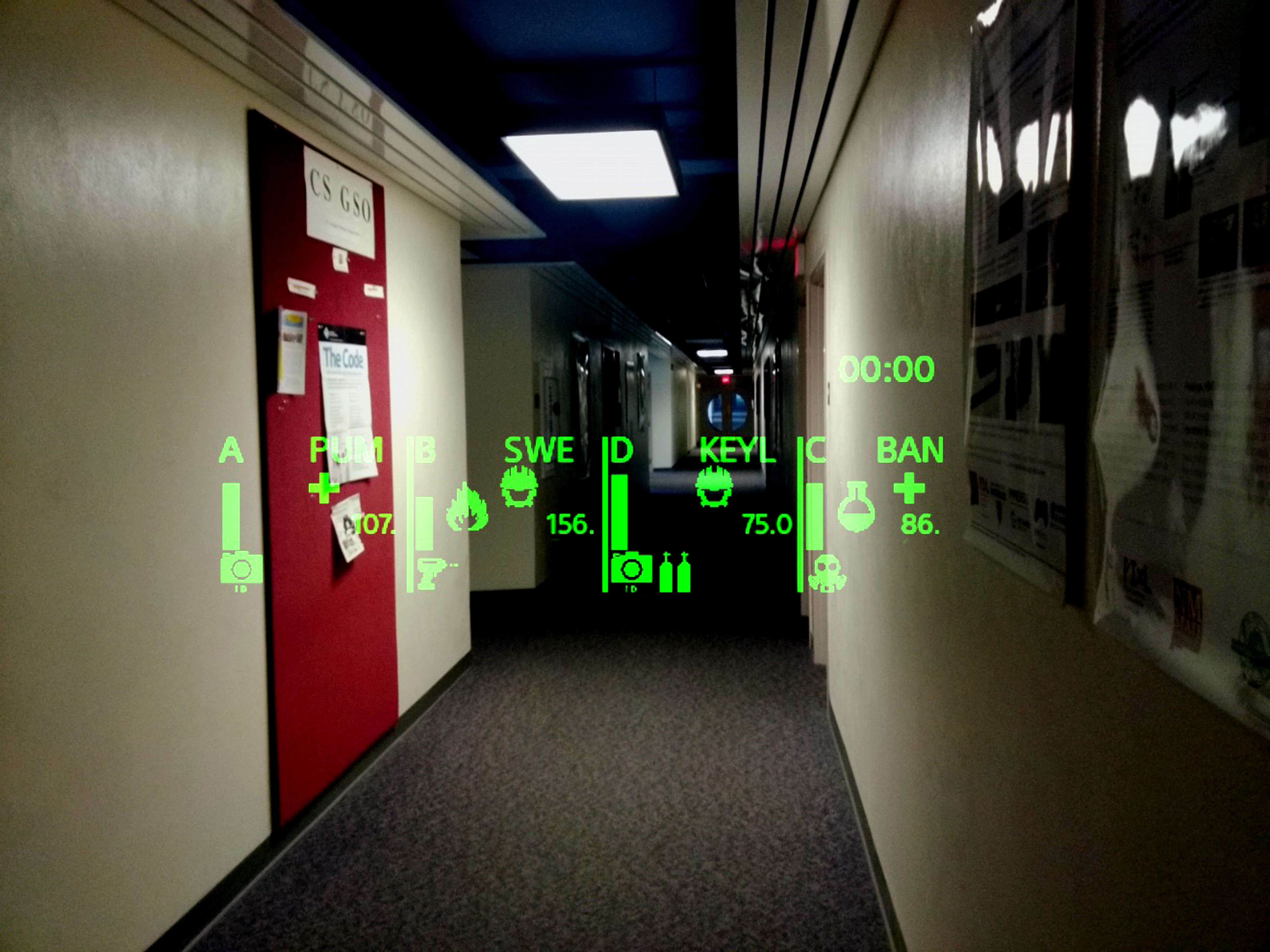
Dubbed the “Icehouse Challenge,” the goal of the competition was to enhance a responder’s situation awareness during emergencies by using wearable communication devices, such as smart phones, smart bands and smart eyeglasses. After two rounds of elimination based on proposals and prototypes, the final round of the competition was held in June during the 2016 IEEE Body Sensor Networks Conference in San Francisco.
“We have millions of first responders who risk their lives every day, so any kind of technological support that we can provide is potentially beneficial,” said Phoebe Toups Dugas, project adviser and assistant professor of computer science in the College of Arts and Sciences. “I’ve always seen it as a space where people are kind of underserved as far as technology goes, so it’s a good opportunity to design things that are helpful.”
Icehouse is a six-room, virtual training environment where real first responders and special operators “play” the roles of workers entering a dangerous situation. The NMSU team and other developers were tasked with creating technologies to help the workers perform their duties while also minimizing exposure to various threats.
“The main idea of the challenge was to look at technology and see if it’s ready for disaster responders or not,” said Hitesh Nidhi Sharma, a computer science masters student who helped design the software. “They were trying to see if these kinds of new, wearable technology are actually useable in real contexts or not – that’s why they set up this virtual game to simulate a real environment, and then see if the technology can be used in this semi-simulated environment, and maybe in real life as well.”
Using mixed reality, threats are electronically simulated and range from chemical hazards and explosions, to fires or injuries to team members.
At the conference, members of the U.S. Coast Guard – equipped with an Android cellphone, a Sony Smart Band and Sony Smart Eyeglasses – tested out the final software designs by going to separate “rooms” in the Icehouse and checking in at computer stations to see what threat was in that location. To alleviate the problem, first responders had to conduct different activities that simulated the physical exertion needed in real-life rescue scenarios.
For example, “the way you would put a fire out is by getting your heart rate up, so they’re jogging in place with fitness bands on,” Toups said. “It’s supposed to require this physical exertion, but also simulate the need to make choices about which room to tackle first – what order do you deal with things in.”
The equipment and software helped the emergency responders better communicate by providing decision support among team members, while also monitoring team members’ physiology and relaying data through displays in the smart glasses.
“The most important part of all of this is to find some way to help the disaster responders maintain situation awareness between the workers,” said Sultan Alharthi, a team member and interdisciplinary doctoral student. “So four workers have to keep track of all of their teammates through their heart rates, through the vital data that we collect.”
Programs were judged based on quality, user experience and quantitative metrics, including mission completion time, level of effort, length of exposure to hazards and threats neutralized.
At the conference, NMSU competed against two other schools, ultimately tying for first place with a team from Friedrich-Alexander University Erlangen-Nuremberg in Bavaria, Germany. The teams plan to collaborate on a publication comparing their Icehouse programs for next May’s ACM Conference on Human Factors in Computing Systems in Denver.
Other NMSU students involved in the project were Cayden Wilson, an undergraduate in the Department of Engineering Technology and Surveying Engineering, and Sachin Sunka, a computer science graduate student who plans to use the Icehouse project as his master’s thesis.
Supporting faculty members include Rolfe Sassenfeld, assistant professor of electronics and computer engineering technology; Wei Tang, assistant professor in the Klipsch School of Electrical and Computer Engineering; and Igor Dolgov, associate professor of engineering psychology.
For more information on the Icehouse Challenge, visit http://bsn.embs.org/2016/icehouse/.
